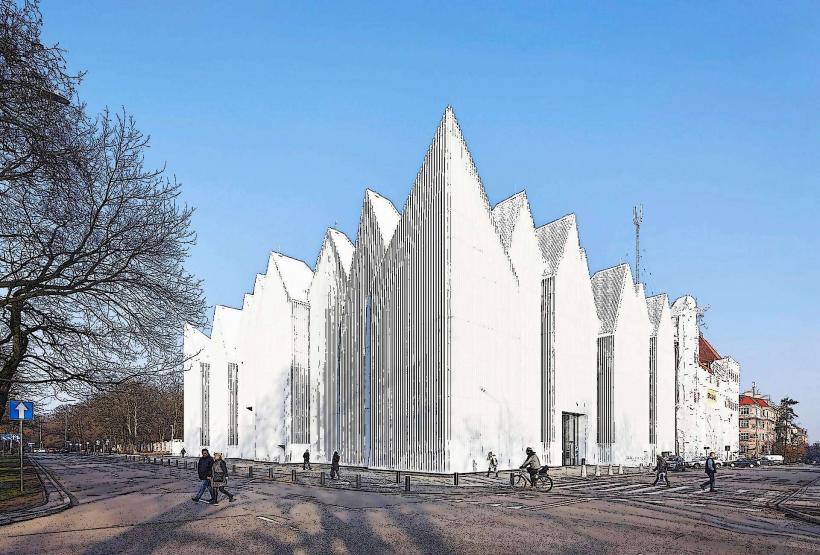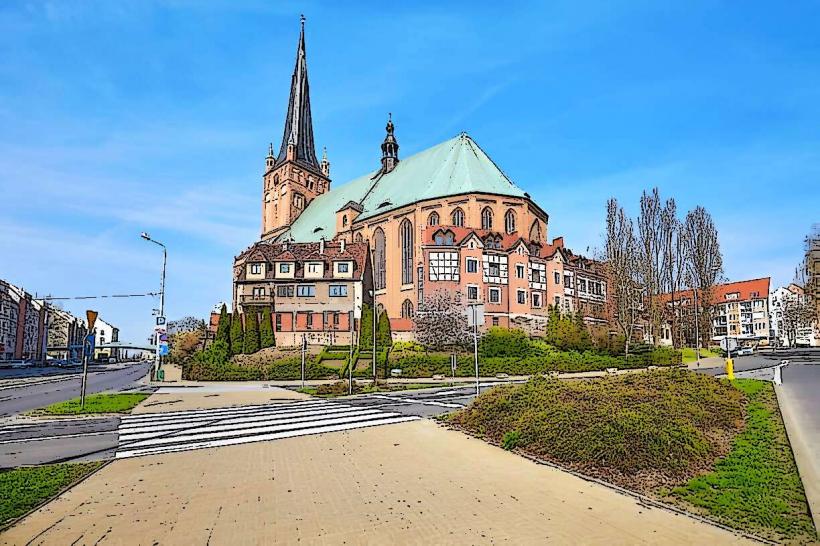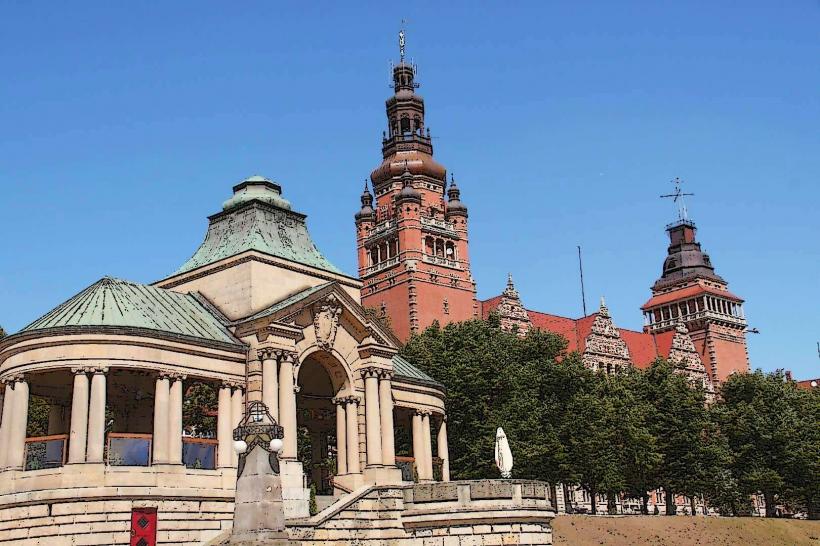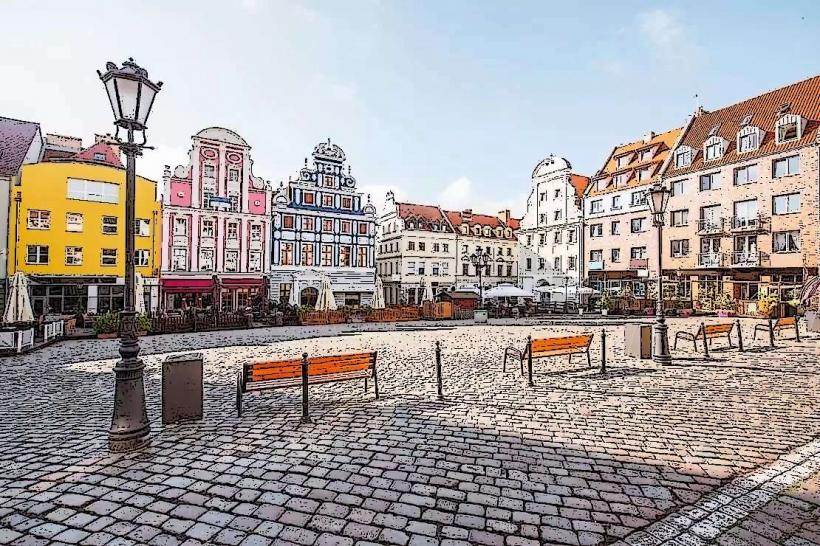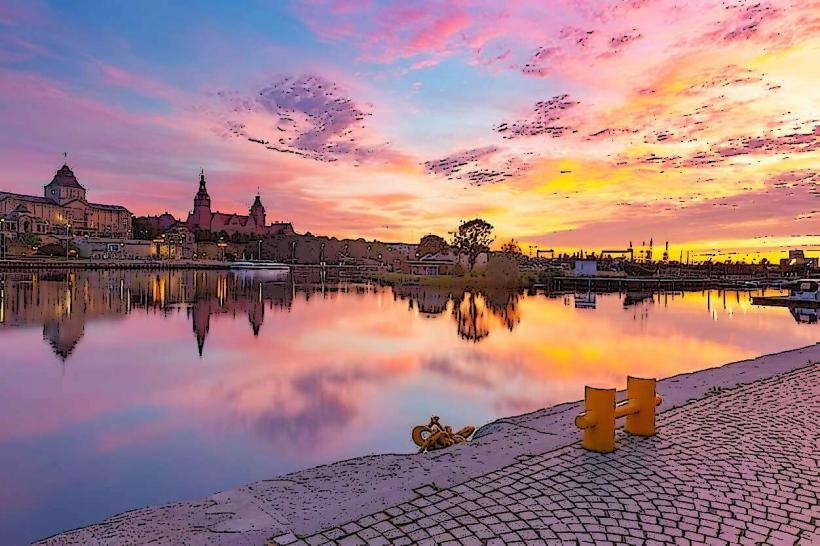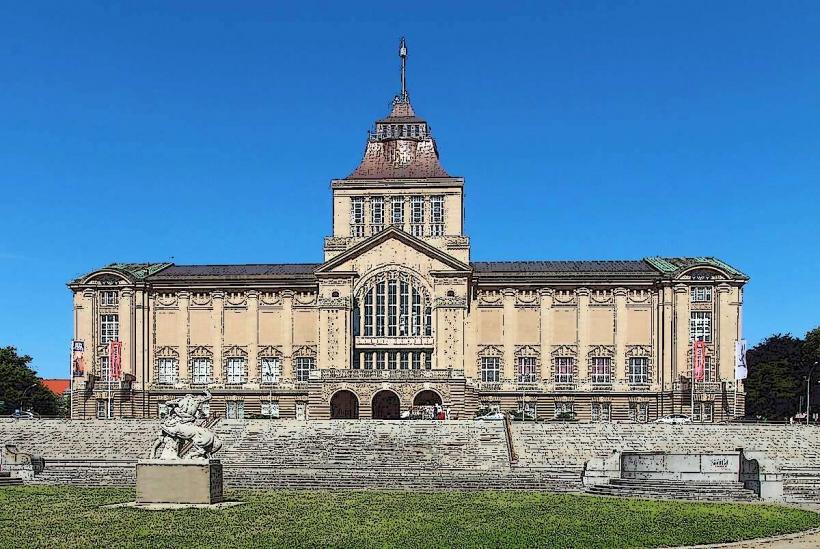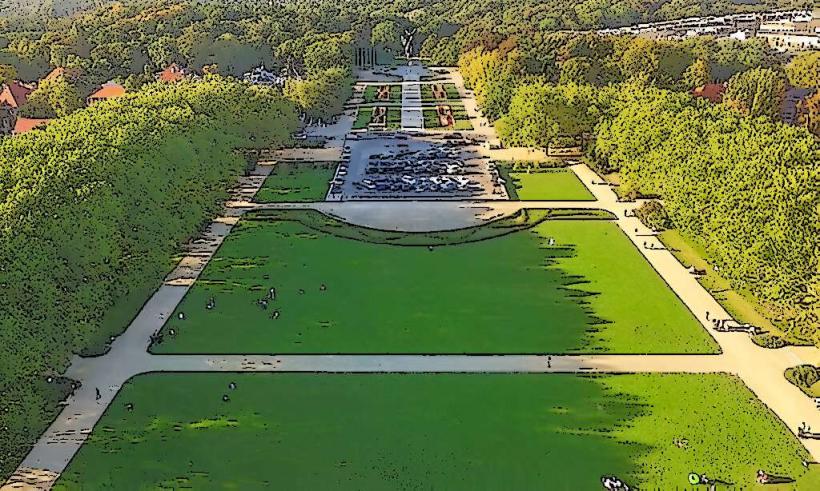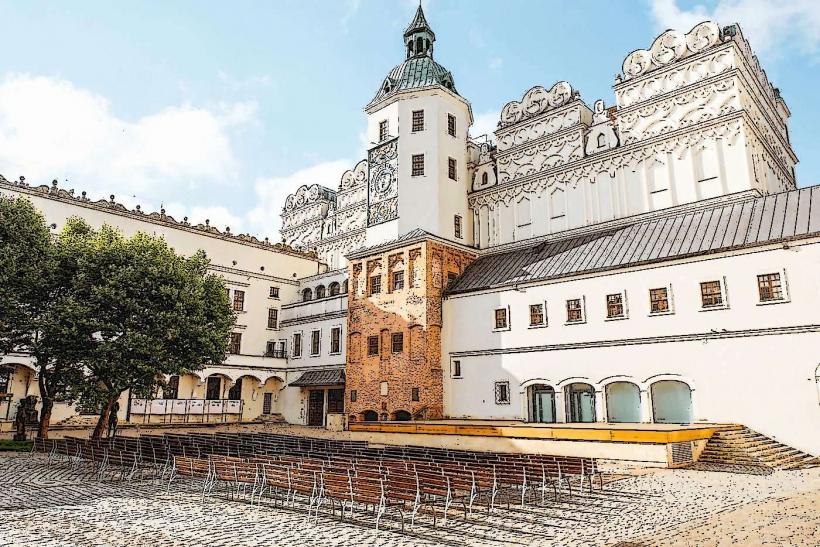Information
Landmark: Szczecin Central CemeteryCity: Szczecin
Country: Poland
Continent: Europe
Central Cemetery in Szczecin (Cmentarz Centralny w Szczecinie)
The Central Cemetery (Cmentarz Centralny) is one of the largest and most significant cemeteries in Szczecin, Poland. It is a monumental resting place that not only holds historical value but also plays an important role in the cultural and architectural landscape of the city. This cemetery is an extensive site where many notable figures in Polish history, particularly from the Szczecin region, are buried.
1. History and Significance
Establishment:
- The Central Cemetery was established in 1901 on the outskirts of the city, at a time when Szczecin (then part of Germany, known as Stettin) was experiencing rapid urbanization and population growth.
- The cemetery was designed as a vast park-like burial ground, reflecting the cultural and aesthetic trends of the early 20th century, influenced by the English garden cemetery movement.
Expansion:
- Over the years, the cemetery expanded, and today, it covers an area of about 80 hectares (200 acres), making it one of the largest cemeteries in Europe.
- The Central Cemetery is still active, with new graves being added to the site, and it remains an important place for mourning and remembrance for the people of Szczecin.
2. Architecture and Layout
Park-like Design:
- The cemetery’s design incorporates green spaces, landscaped gardens, and tree-lined avenues, making it feel more like a park than a traditional burial ground. This is a hallmark of the garden cemetery style, which was popular in Europe during the late 19th and early 20th centuries.
- Paths wind through the cemetery, leading to individual burial plots and larger memorial areas. The peaceful and contemplative environment is enhanced by the natural surroundings and the inclusion of sculptures and decorative elements.
Memorials and Monuments:
- The Central Cemetery features a variety of memorials, statues, and monuments that pay tribute to notable individuals and historical events.
- Notable graves include the tombs of World War II victims, local public figures, and prominent citizens of Szczecin.
War Graves:
- The cemetery houses several sections dedicated to victims of World War I and World War II, including soldiers from both Poland and Germany.
- Special memorials and tombstones commemorate the sacrifices made by those who fought in the wars, and several monuments are dedicated to the memory of the Holocaust and Szczecin’s Jewish community.
3. Notable Burials
Local Figures:
- The Central Cemetery is the final resting place for many of Szczecin’s most important citizens, including politicians, artists, academics, and military figures.
- Among the most famous buried here are prominent cultural figures and individuals who contributed to the development of the city.
Military and Historical Figures:
- The cemetery contains graves of World War II soldiers, some of whom were Polish and others who were German, reflecting the city’s complicated history and the shifting borders of the 20th century.
- A section of the cemetery also commemorates victims of the communist regime, including those who fought for Polish independence and civil rights during the 20th century.
Jewish Community:
- The cemetery contains a Jewish section, which includes graves of members of Szczecin’s once-thriving Jewish community before its near destruction during World War II.
4. Cultural and Educational Importance
Cultural Heritage:
- The cemetery holds immense cultural and historical value for the city of Szczecin and the broader Pomerania region. It serves as a repository of memory for past generations and provides insight into the city’s evolving social and political history.
- Its design and monuments reflect architectural trends from the late 19th and early 20th centuries, making it a site of interest for those studying urban development and historical landscaping.
Tourism and Education:
- The Central Cemetery is a destination for tourists, historians, and students interested in the social and cultural evolution of the region.
- Guided tours are available, providing visitors with deeper insights into the lives of those buried at the cemetery and the broader history of Szczecin and Pomerania.
- The cemetery also serves as a location for memorial services, particularly on significant dates like November 1st (All Saints’ Day), when Poles traditionally visit the graves of their loved ones.
5. Visitor Information
Access:
- The Central Cemetery is located in the western part of the city and is easily accessible by public transport and car.
- It is open to visitors year-round, and its spacious grounds make it an ideal location for peaceful walks.
Visiting Hours:
- The cemetery is typically open daily, but it is best to check for specific opening times, especially for any special memorial events or services.
Facilities:
- There are visitor services available, such as guided tours, informational plaques, and cemetery maps to help visitors navigate the large grounds.
- Floral tributes and candles can be purchased at the cemetery, particularly during holidays like All Saints' Day.
6. Conclusion
The Central Cemetery in Szczecin is not just a final resting place for the dead, but a vital cultural landmark and an essential part of the city's heritage. Its expansive grounds, monumental architecture, and peaceful atmosphere make it a unique and poignant site. For anyone interested in Szczecin’s history, the cemetery offers an opportunity to reflect on the region’s past and the lives of those who have shaped its development over the centuries.

